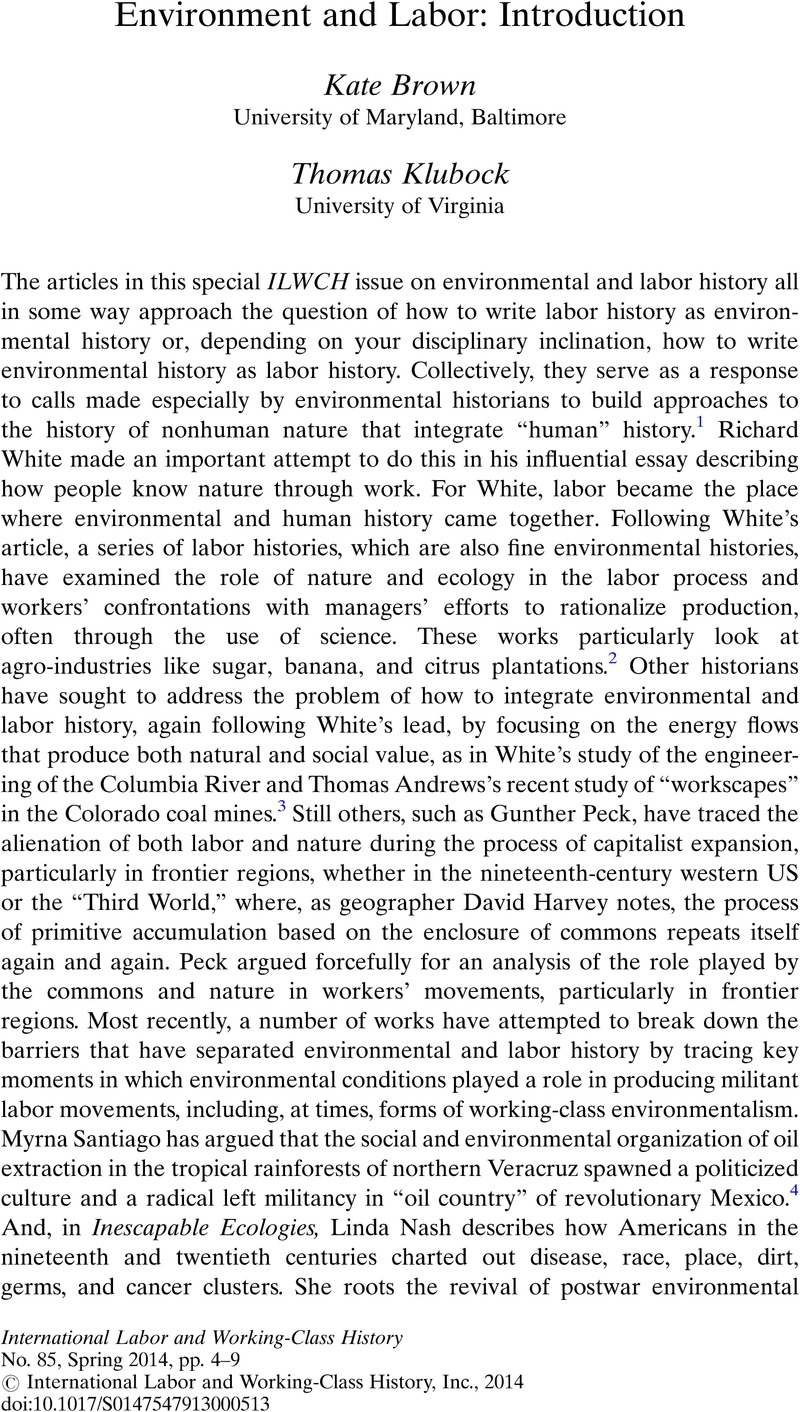Article contents
Environment and Labor: Introduction
Published online by Cambridge University Press: 24 March 2014
Abstract

- Type
- Environment and Labor
- Information
- Copyright
- Copyright © International Labor and Working-Class History, Inc. 2014
References
NOTES
1. See William Cronon, “The Trouble with Wilderness; or, Getting Back to the Wrong Nature” and White, Richard, “Are You an Environmentalist or Do You Work for a Living?” in Uncommon Ground: Rethinking the Human Place in Nature, ed. Cronon, William, (New York, 1996)Google Scholar; Peck, Gunther, “The Nature of Labor: Fault Lines and Common Ground in Environmental and Labor History,” Environmental History 11 (2006): 212–38CrossRefGoogle Scholar.
2. Marquardt, Steve, “‘Green Havoc’: Panama Disease, Environmental Change, and Labor Process in the Central American Banana Industry,” The American Historical Review, 106 (2001): 49–80 CrossRefGoogle Scholar; Sackman, Douglas, “‘Nature's Workshop’: The Work Environment and Workers' Bodies in California's Citrus Industry, 1900–1949,” Environmental History 5 (2000): 27–53 CrossRefGoogle Scholar; Soluri, John, Banana Cultures: Agriculture, Consumption, and Environmental Change in Honduras and the United States (Austin, TX, 2006)Google Scholar; Rogers, Thomas, The Deepest Wounds: A Labor and Environmental History of Sugar in Northeast Brazil (Chapel Hill, NC, 2010)CrossRefGoogle Scholar.
3. White, Richard, The Organic Machine: The Remaking of the Colombia River (New York, 1995)Google Scholar; Andrews, Thomas, Killing for Coal: America's Deadliest Labor War (Cambridge, MA, 2008)Google Scholar.
4. Santiago, Myrna, The Ecology of Oil: Environment, Labor, and the Mexican Revolution, 1900–1938 (Cambridge, MA, 2009)Google Scholar.
5. Nash, Linda, Inescapable Ecologies: A History of Environment, Disease, and Knowledge (Berkeley, CA, 2007)Google Scholar.
- 2
- Cited by


